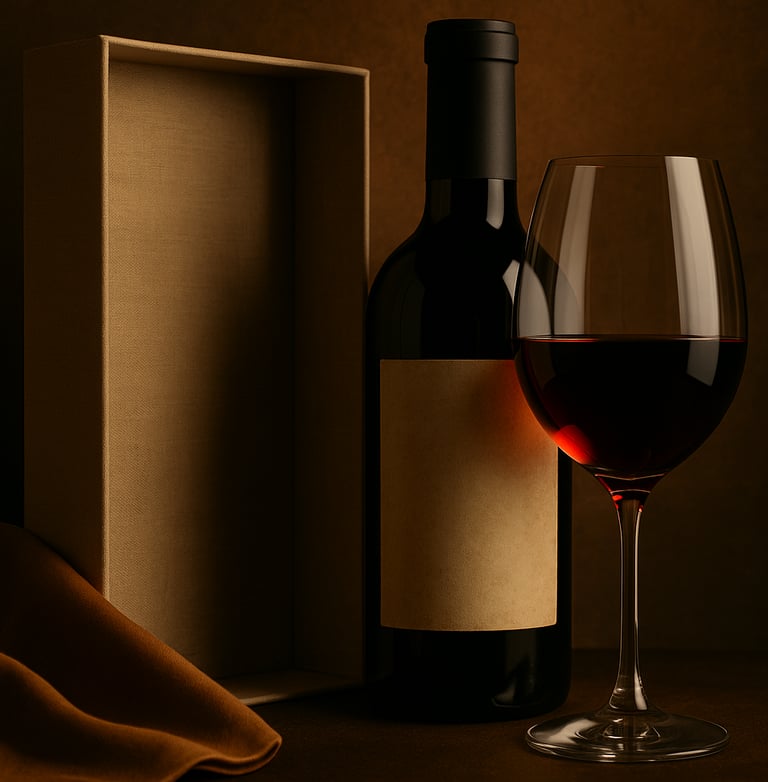
The Power of Detail
Sensory Design as Strategic Language
10/9/2025


Introduction: Luxury Is Not Explained. It Is Perceived
A fine wine brand does not need to list its qualities. When design is conceived with sensitivity and precision, the details speak for themselves. In luxury, the consumer experience begins before uncorking, and often even before seeing the bottle.
Form, weight, texture, temperature, colour, aroma, rhythm. Everything is design. Everything communicates. And the brands that understand this build a sensory narrative that seduces without invading, that suggests without imposing.
Sensory Design as a Positioning Tool
The luxury consumer does not choose only with reason or palate. They choose with the body, the memory, the expectation. Sensory design allows the brand to accompany every moment of the client’s emotional journey, from perception to belonging.
What does it feel like to open the box? How does the cork sound? What temperature does the glass convey? What silence accompanies the experience?
A brand that takes care of these elements does not offer a product: it offers a world.
Cases That Turned Detail into Sensory Signature
✦ Ruinart (France)
Its white packaging with soft texture, free from superfluous visual elements, conveys purity, silent volume, intellectual sophistication. Every contact with the brand generates a sense of elegant calm.
✦ Marqués de Murrieta (Spain)
The restoration of Castillo de Ygay was not just an architectural gesture: it was an act of sensory storytelling. Every room, temperature, light and surface is designed to convey time, history and permanence.
✦ Tokaj Hétszőlő (Hungary)
Light bottles, calligraphic labels, aromas that emerge without aggressiveness. A brand that understands that luxury is also touch, pause, and natural elegance.
How a Brand That Designs Sensory Experiences Thinks
Brands that position themselves through sensory design do not take isolated aesthetic decisions: they build a choreography of sensations.
Keys:
Consistency between the visual, the tactile, and the emotional. Design should not only look good: it must be felt, smelled, flow.
Absence of oversaturation. In luxury, “less” is not empty minimalism: it is clarity, focus, respect for the other’s space.
Narrative sequence. Every stage of the experience must anticipate the next: discovering, approaching, touching, smelling, drinking, remembering.
Mistakes That Break Sensory Narrative
Many brands frustrate the perception of luxury not because of what they do, but because of what they ignore. Small oversights contradict positioning and disconnect the client.
Common mistakes:
Overloaded labels with unnecessary graphic codes.
Outer packaging incoherent with the brand promise.
Rushed rhythm in visits or activations.
Hospitality spaces poorly lit or without temperature control.
Luxury is built at the threshold of the experience. And if that threshold is poorly designed, the promise fades.
Concrete Applications for Wineries That Want to Elevate Their Sensory Design
Audit your brand experience through all the senses. How does your presentation sound? How do your materials feel? What aromas accompany the journey?
Review the rhythm. Luxury is not acceleration. It is pause, waiting, contemplation.
Choose a signature gesture. An element that becomes a registered sensory trademark. It could be a type of paper, a team gesture, subtle music, a curated aroma.
Work on the elegance of non-excess. In luxury design, omission is an act of mastery.
Conclusion: Detail Is the New Manifesto
In fine wine, every design decision is a silent declaration of what the brand is and how it wishes to be remembered.
🍷 Because whoever masters detail, masters perception. And in the world of luxury, power is not imposed: it is perceived in the well-designed experience.

